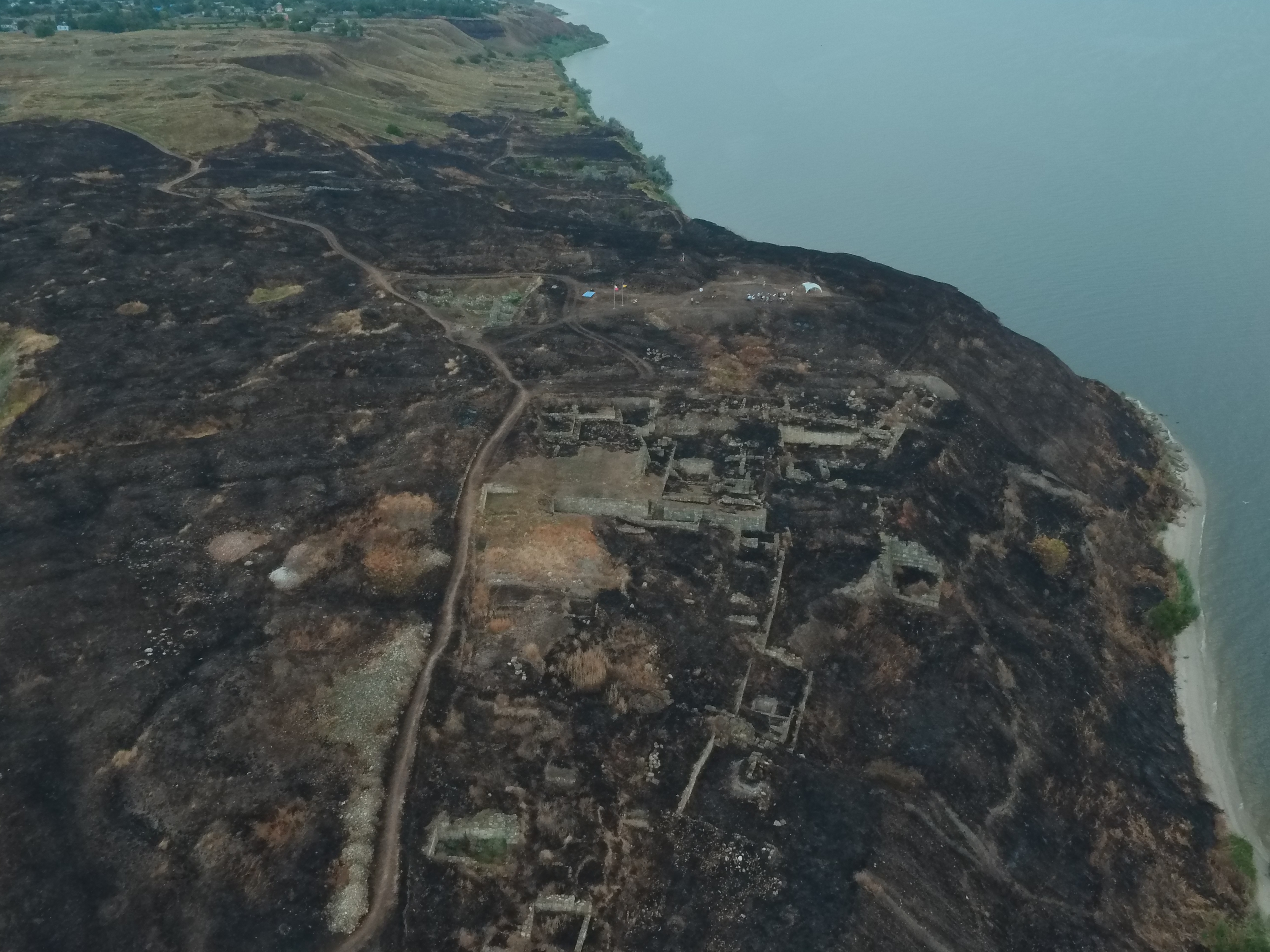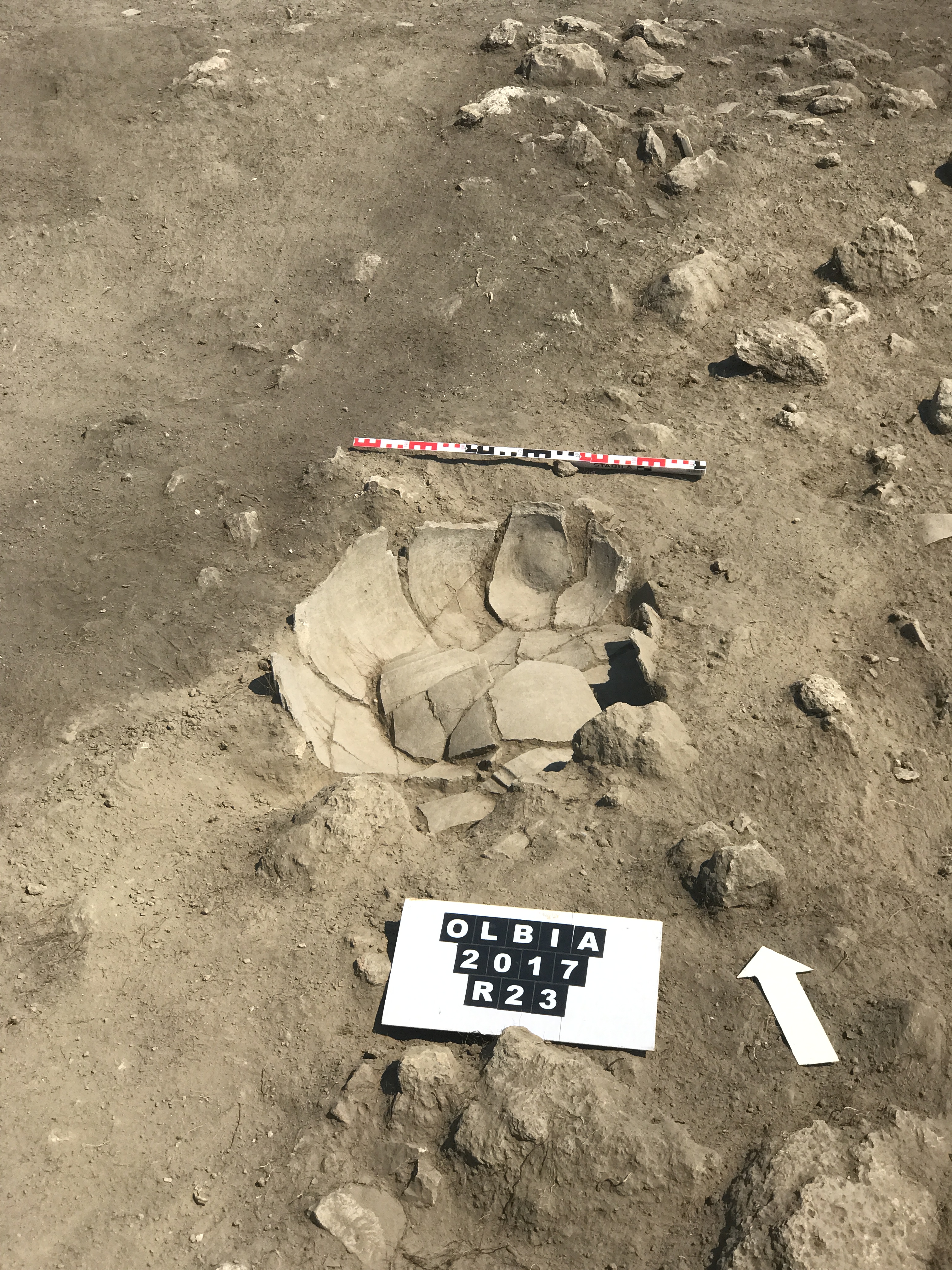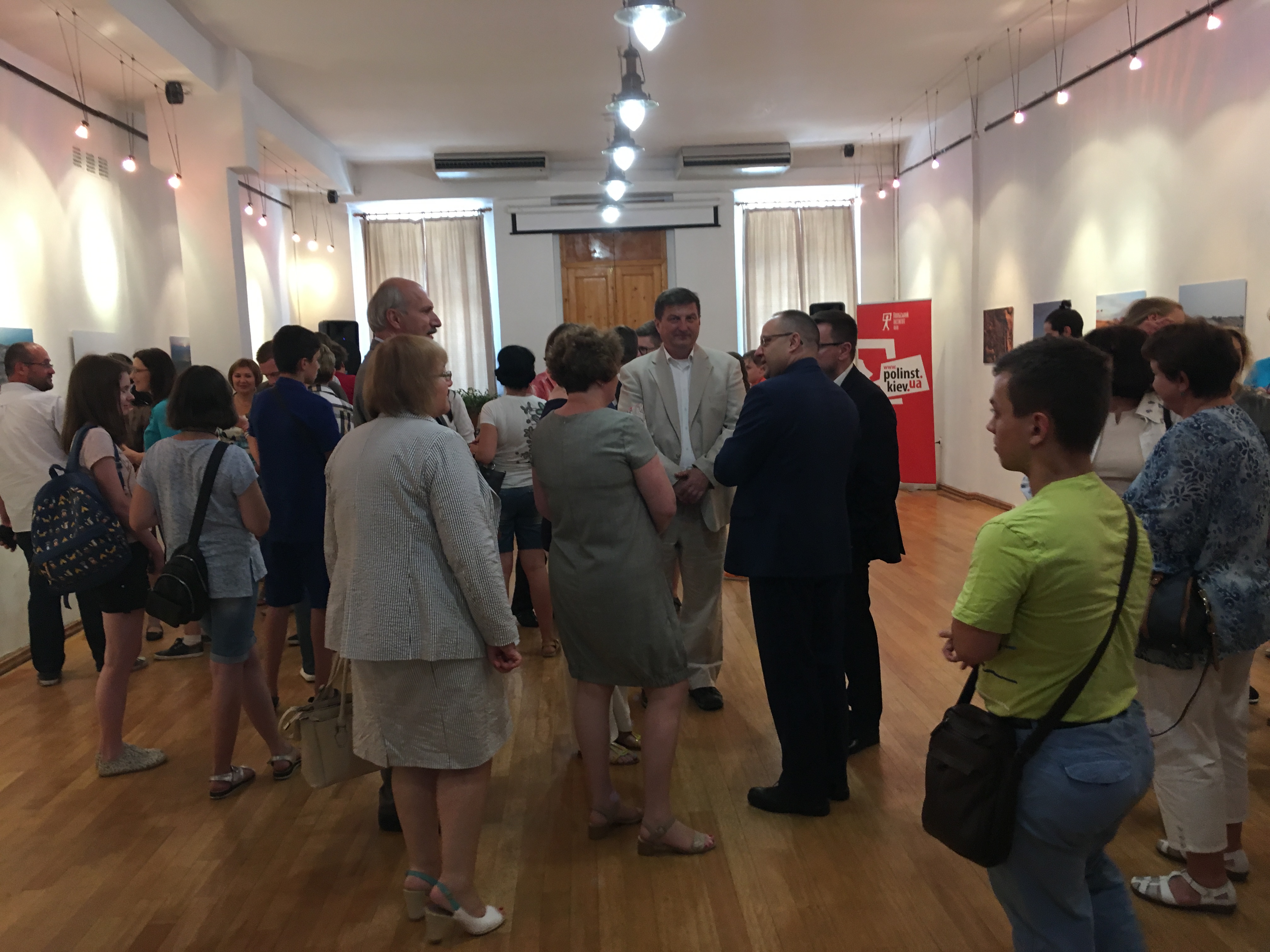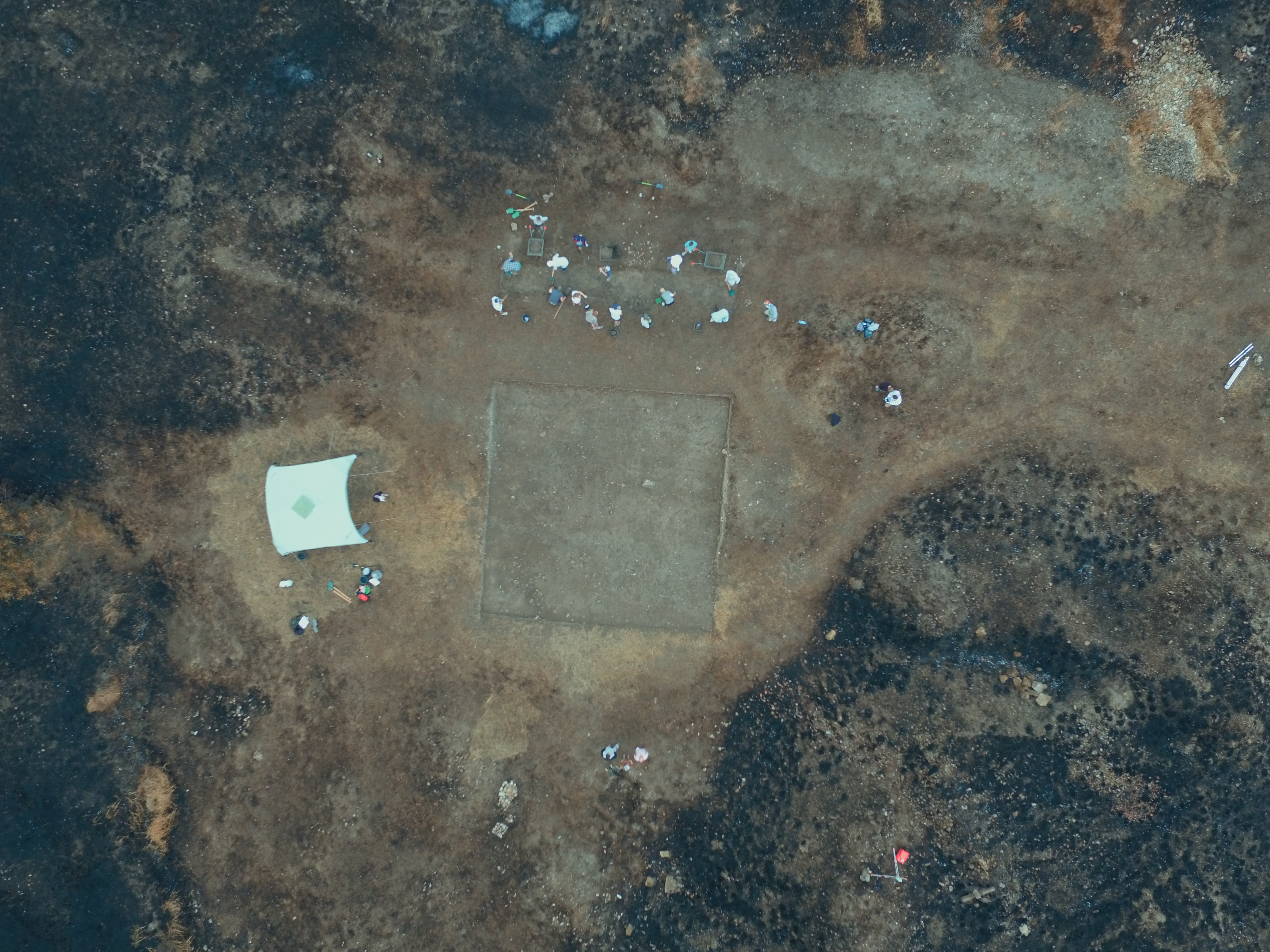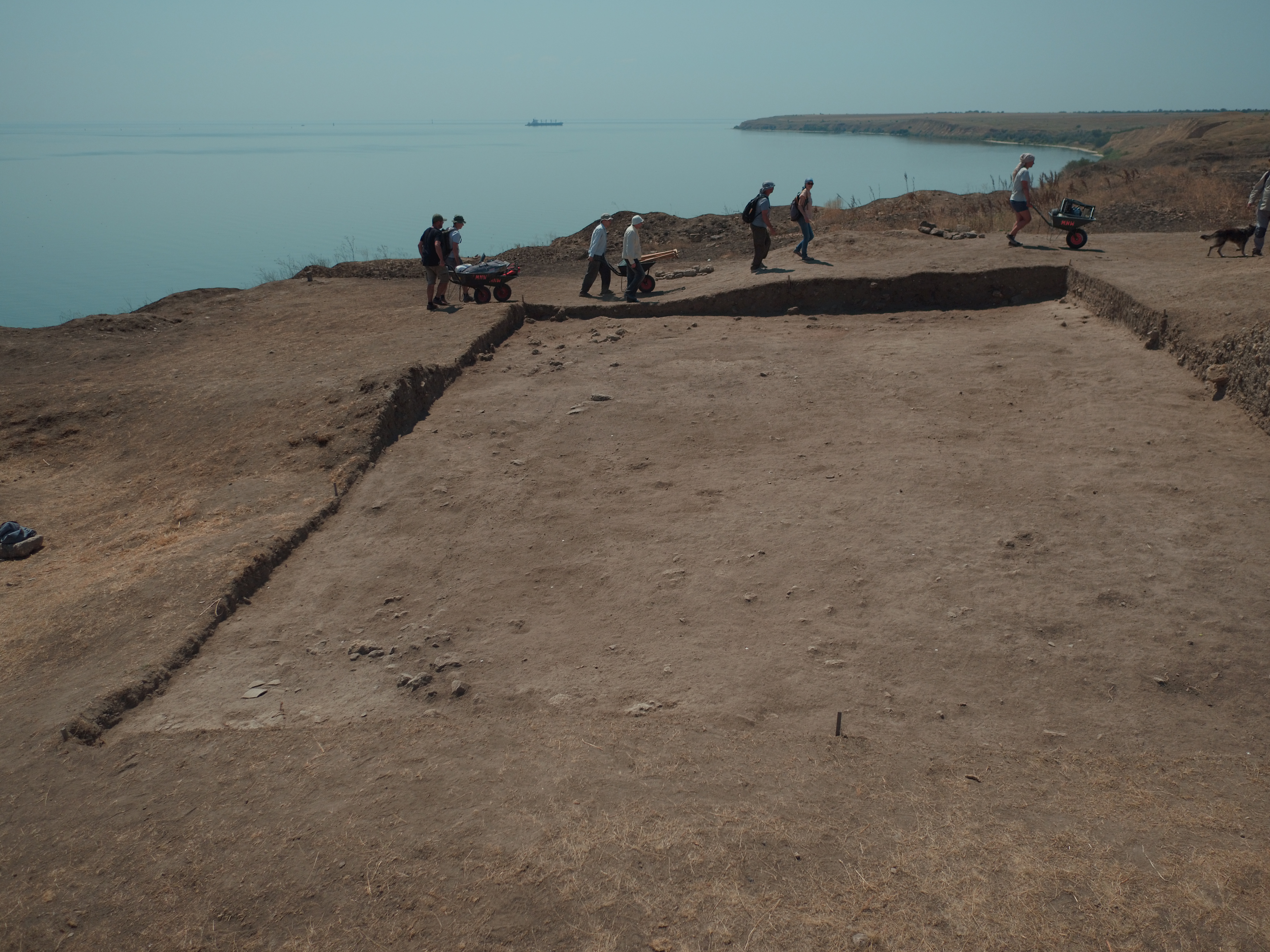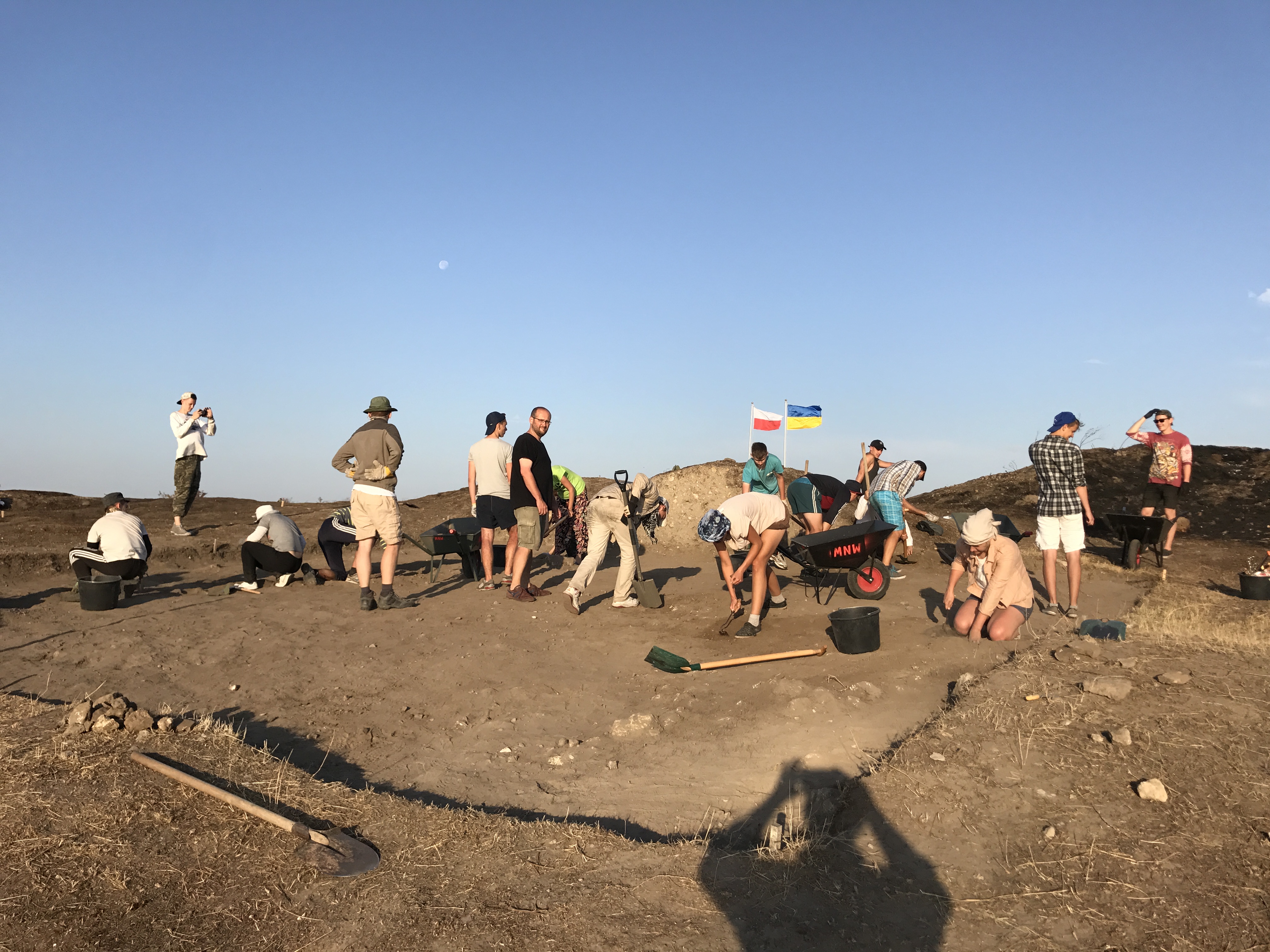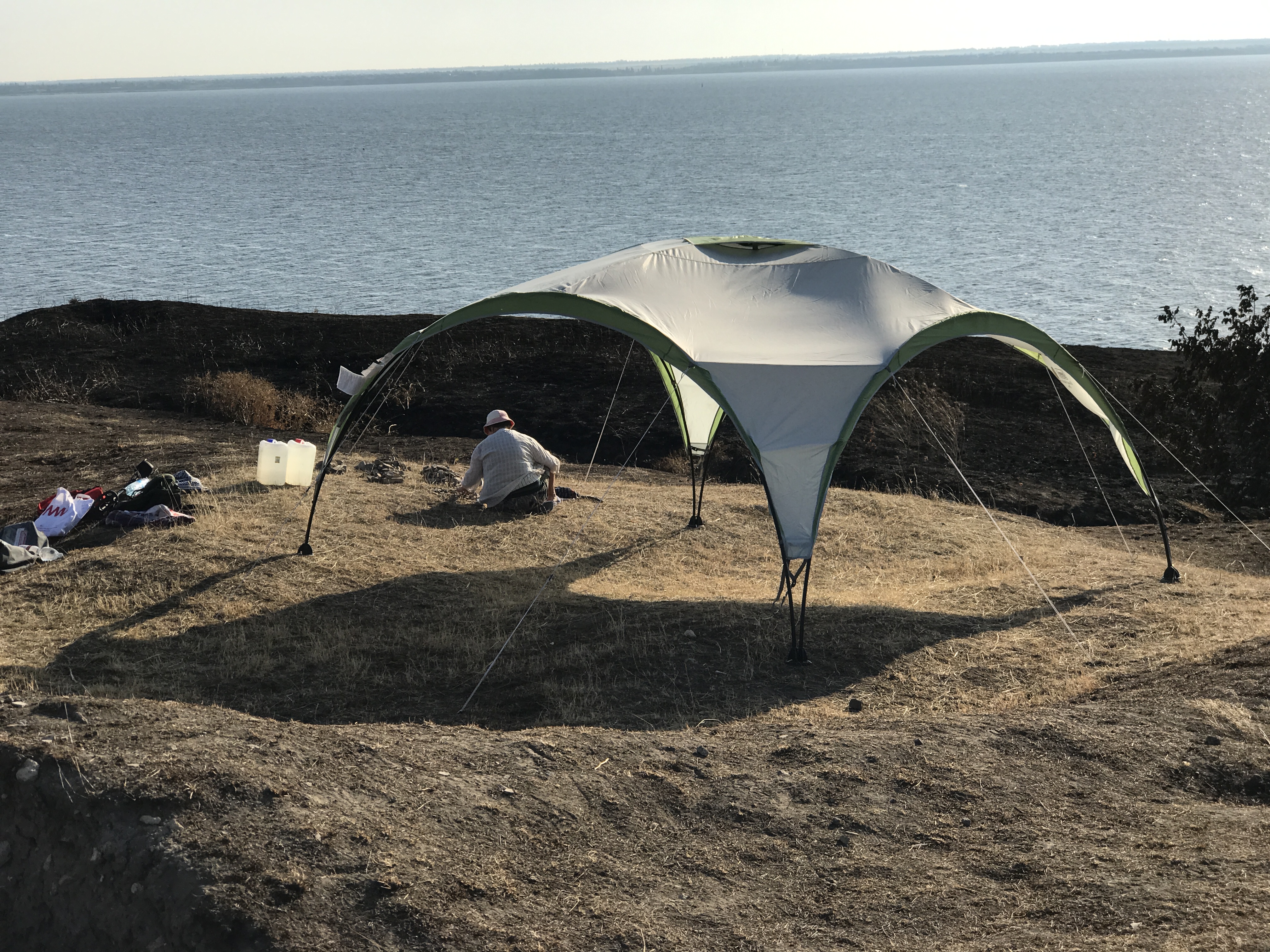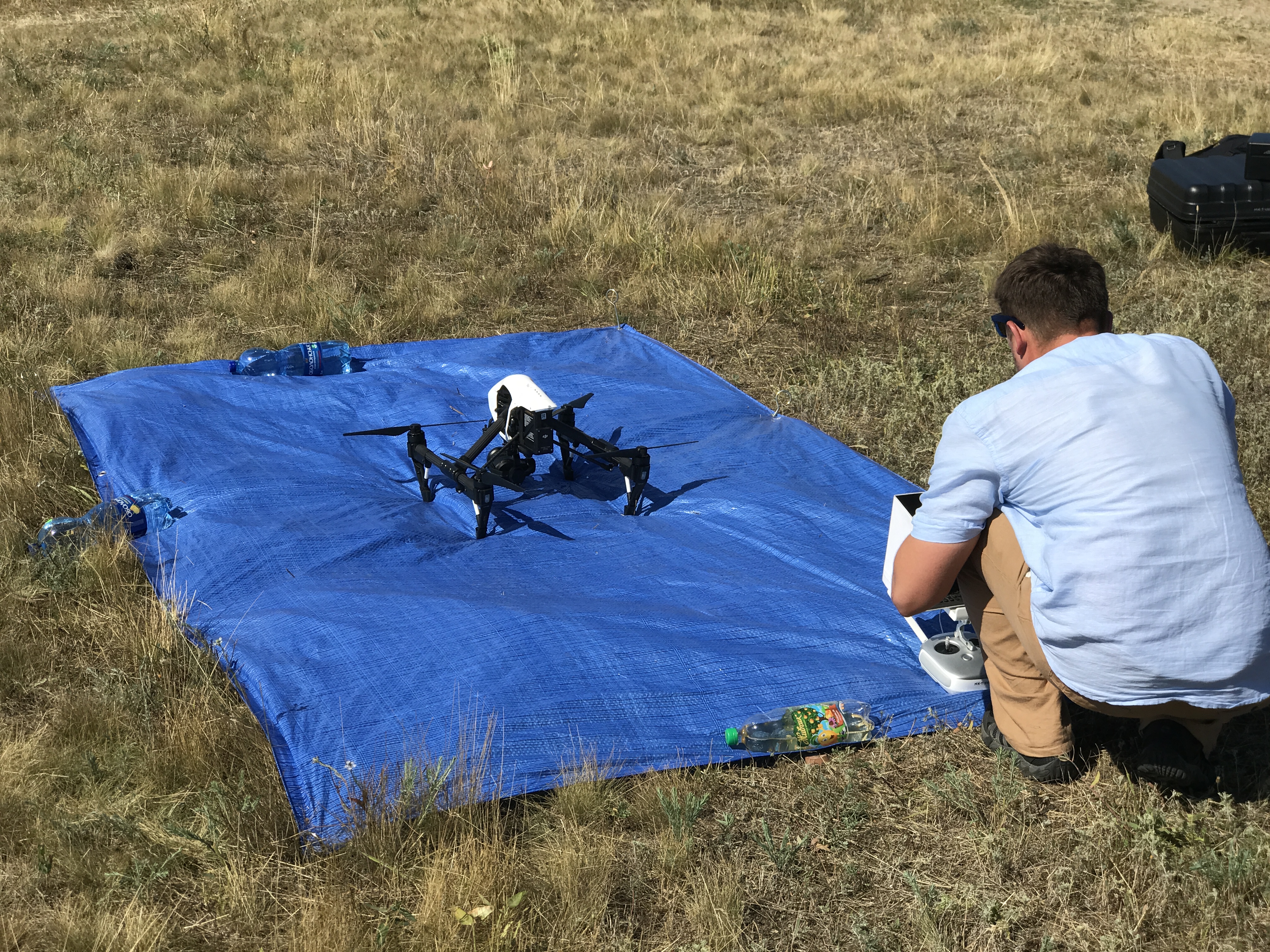Excavation works at the Olbia site lasted until 10 August. Apart from continued exploration of the trench dug last year, digging began in two new archaeological squares (50 m2), as a result of which the trench now occupies 150 m2. This year marked the beginning of exploration of the youngest cultural layers, which yielded very interesting results. We unearthed the remains of architectural structures, including stone walls and traces thereof, which, based on the uncovered artefacts, have been provisionally dated between the late 4th and maybe even early 5th c. AD. The tentative assumption is that the unearthed remains of walls most likely date to the period of a Chernyakhov settlement at Olbia. Still, only after a thorough analysis of the excavated material – mainly late antique ceramics and coins – may we be certain about this fact. Fieldwork in the trench lasted until 3 August. The last week of the mission was devoted to documenting the finds. On 10 August, the full set of artefacts, together with excavation documentation, was handed over to the Ukrainian party. The majority of the Polish staff, as well as the mission’s machinery and equipment, left for Poland on the same day. The head of mission left Olbia on 12 August, officially ending the NMW excavation season at the site.
This year’s archaeological campaign yielded over 300 discrete artefacts. These include fragments (but also entire structures) of ceramic vessels, terracotta artefacts, lamps, glass vessels and beads, stone and metal finds (including a fragment of a marble statue and several dozen coins, respectively). Furthermore, almost 20,000 mass objects were documented in the course of this year’s excavations (mostly fragments of vessels and other clay objects) as well as nearly 3,000 animal bones. The latter included the remains of a beaver, which was somewhat surprising as these animals have previously not been encountered in the immediate surroundings of the site. A more thorough analysis will be possible once we receive the initial report of Dr. Yevgeniya Yanish, our Ukrainian colleague from the I. I. Schmalhausen Institute of Zoology of the National Academy of Sciences of Ukraine (NASU). Conclusions of the analysis of late antique ceramics, glass and coins are bound to prove equally interesting.
What should be stressed here is the model cooperation with the Ukrainian side during this year’s campaign: both with volunteers from universities in Lviv, Kharkiv and Berdyansk, who did their archaeological internships at the Olbia site, including the ‘Polish’ trench, and with Ukrainian specialists employed by the Polish archaeological mission via the IA NASU in Kyiv. Another event that merits particular attention was the establishment of long-term contacts with the Polish diaspora in Odessa, particularly the local youth. A large group of Poles living in Odessa came to the official opening of the photography exhibition from last year’s NMW excavations at Olbia, which took place on 15 July at the prestigious Greek Cultural Foundation in Odessa (on the initiative of the Polish Institute in Kyiv; on the Polish side, the exhibition was opened by the Deputy Ambassador of the Republic of Poland in Ukraine Jacek Żur and the Consul General of the Republic of Poland in Odessa Dariusz Szewczyk). A mere week later we hosted a Polish trip of over 30 persons (mostly children and young people) at Olbia. The NMW mission organized a guided tour of the archaeological site conducted in Polish. During the excavations, we were also visited by Ms. Emilia Jasiuk, Advisor of the Polish Embassy in Kyiv, who heads the department of scientific and educational cooperation. During a two-day visit, she became acquainted with the site and work of the NMW’s archaeological mission.
The next several months will be devoted to researching the gathered material. First of all, we will be publishing discrete artefacts from this year’s campaign in the online database, and further on, like last year, the 2017 excavation campaign report will be published on the project’s website.
Alfred Twardecki
